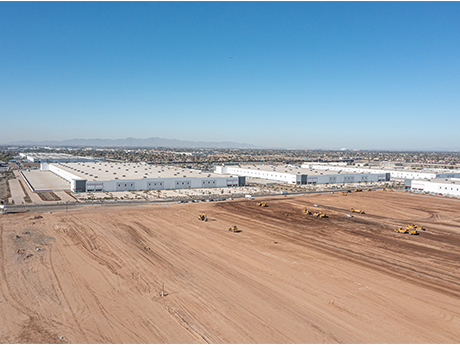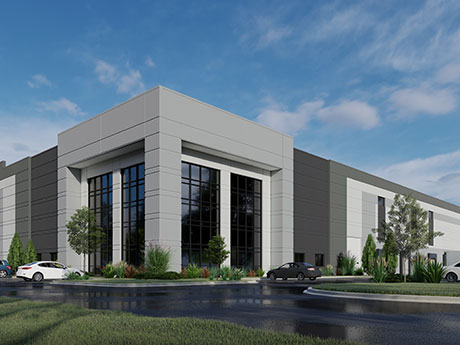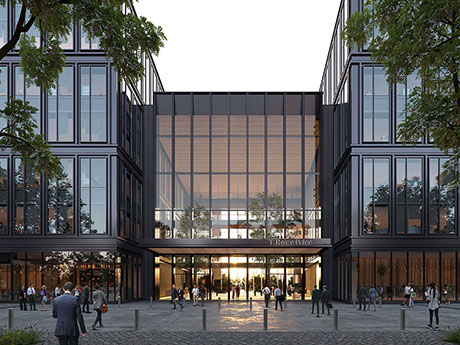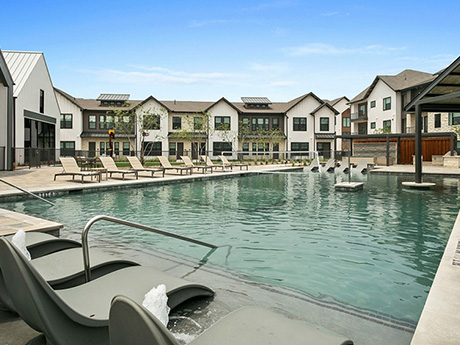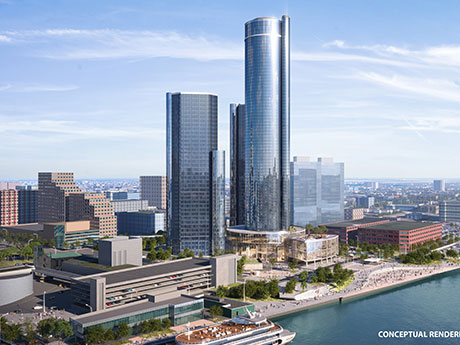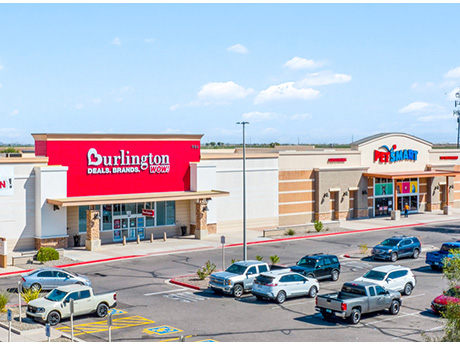— Phillip Hernandez, Research Director, Colliers — The Phoenix industrial market showed resilience throughout 2024. Arizona ranked fifth in net migration as of October, with 62,533 new residents — 52.8 percent of whom relocated from California. This influx of residents has positively impacted the labor market, growing Phoenix’s workforce by 42,900 employees by November, a 1.7 percent increase from the previous year. Investor interest in Phoenix’s industrial sector also remains strong. Fourth-quarter sales volume reached $1.9 billion, a 74 percent increase compared to the previous quarter and a 91.8 percent year-over-year increase. This brought last year’s total sales volume to $4.3 billion, with average prices per square foot rising by 2 percent (to $204.20) compared to fourth-quarter 2023. Vacancy Trends and Absorption Despite strong investor activity, the Phoenix market is experiencing rising vacancy rates. New deliveries in the fourth quarter added 7.8 million square feet to the market, bringing total deliveries for 2024 to 34.8 million square feet. However, the vacancy rate increased to 10.6 percent, marking a year-over-year 390 basis points rise. This increase is largely attributed to the completion of vacant product. Net absorption reached 3.8 million square feet in the fourth quarter, contributing to a year-to-date total of …
Market Reports
Key Bridge Collapse Puts Infrastructure, Baltimore Industrial Market’s Fundamentals in Focus
by John Nelson
A major attraction within the Baltimore industrial real estate market has historically been the Port of Baltimore, as it is the most inland port on the East Coast, ranks in the top 20 nationally for tonnage and top 10 for dry bulk and attracts users and investors for its impressive capabilities. Closing on the end of first-quarter 2025, here are a few noteworthy project and market updates: March 26, 2024: The Key Bridge collapsed due to a physical collision from the container ship Dali. The bridge collapse was a tragic event with six lives lost and shipping (both in and out) being blocked for nearly three months as crews cleared the debris. $2B Key Bridge rebuild: Maryland Gov. Wes Moore unveiled the new design for rebuilding the bridge in February. The bridge is anticipated to deliver by fall 2028 and comes with enhanced capabilities, such as a 45-foot height increase and a 300-foot width increase for the shipping channel when compared with the previous design. Kiewit Infrastructure estimates the overall project will cost $2 billion. Howard Street Tunnel: As part of nearly $500 million directed toward local infrastructure projects, CSX recently kicked off the long-awaited Howard Street Tunnel project being …
Developers identify industrial hot spots as areas with low vacancy rates that justify speculative construction. These centrally located sites offer convenient highway access and proximity to a wide labor pool. In the Midwest, examples of industrial development hot spots where demand has remained strong include Chicago, Minneapolis, Columbus and Louisville, according to Steve Schnur, chief operating officer with Chicago-based CRG. He cites these markets because of their affordability, business-friendly environment and robust logistics infrastructure. These areas tend to keep a healthy supply-demand balance, he adds. Luckily for those whose livelihood is tied to the industrial property type, 2025 is expected to bring a return to pre-pandemic demand drivers, according to CBRE’s “U.S. Real Estate Market Outlook 2025.” The brokerage firm states that industrial occupiers will focus on longer-term strategies to improve warehouse efficiency, ensure supply chain resiliency and meet the needs of an evolving consumer base. At the beginning of this year, CRG inked a lease with States Manufacturing for 503,440 square feet at The Cubes at French Lake in metro Minneapolis. The 1 million-square-foot facility, completed in 2024, marked the largest speculative industrial project ever developed in the state, according to the developer. On the other end of the …
By Taylor Williams DALLAS — As is the case for many commercial asset classes and markets in 2025, there is an expectation of elevated deal volume for investment sales of affordable housing properties in Texas. But brokers in that space caution that the rebound will likely be marginal and is not necessarily indicative of ideal market conditions taking hold. A quintet of panelists broke down this notion and others at the InterFace Texas Affordable & Workforce Housing conference on Feb. 13 at the Westin Galleria Dallas hotel. Mary Ann Bennett, senior managing director at BBG Real Estate Services, moderated the discussion on investment sales activity. Editor’s note: InterFace Conference Group, a division of France Media Inc., produces networking and educational conferences for commercial real estate executives. To sign up for email announcements about specific events, visit www.interfaceconferencegroup.com/subscribe. Panelist Michael Furrow, senior vice president of affordable housing at commercial finance firm BWE, took the audience of 200-plus back in time to illustrate just how quiet the past two years had been. He did so by providing statistics on affordable housing sales for Dallas-Fort Worth (DFW) between 2021 — when multifamily rents and sales prices were peaking across the board — and 2024, when they …
— Dave Carder, Senior Vice President, Kidder Mathews — The state of Phoenix’s office market is not easily summed up with a catchy headline or a few brief bullet points. Along with most large metropolitan areas across the country, Phoenix has struggled with lower demand, rising vacancies and a shift toward hybrid workweeks. However, several emerging trends are creating positive shifts in the market that should be noted as we look to 2025 and beyond. The average vacancy rate of the Phoenix office market over the past decade was 18.5 percent. That includes a low of 13.9 percent in 2019 and a high of 24.8 percent in 2024. Gross leasing absorption averaged nearly 7 million square feet annually, with a high of nearly 7.9 million square feet in 2019 and a low of 5.5 million square feet last year. Net leasing absorption showed a similar pattern, peaking at 3.1 million square feet in 2019 and declining to negative 2.2 million square feet in 2024. These trends point to 2019 being the market’s best-performing pre-pandemic year across all three metrics. Despite 2024’s gross leasing absorption (5.5 million square feet) being close to the 10-year average, the significant rise in vacancy and …
— By Sebastian Bernt and Erick Parulan of Avison Young — The Orange County office market continues to show resilience, particularly compared to urban centers like Downtown Los Angeles. Its suburban environment, coupled with higher office utilization rates, has made it an attractive option for businesses adapting to evolving workplace strategies. As a result, leasing activity has remained steady with availability stabilizing and tenant demand holding firm. Total leasing volume reached 1.6 million square feet in the fourth quarter of 2024, bringing the annual total to 7.8 million square feet. Notable transactions included Willow Laboratories, which signed a 63,440-square-foot lease at 121 Theory Drive in Irvine, and Acrisure, which secured 59,409 square feet at 611 Anton Blvd in Costa Mesa. While leasing slowed slightly in the fourth quarter, demand for modern, amenity-rich office spaces remained strong as companies continued implementing return-to-office strategies. This demand has pushed average asking lease rates to $35.05 per square foot, reflecting a broader shift toward high-quality, collaborative work environments that prioritize employee engagement and workplace experience. Orange County’s growing residential appeal has further fueled office demand as young professionals and families increasingly opt for a suburban lifestyle. As a result, companies are prioritizing locations with …
The national office market continues to face headwinds in the wake of the COVID-19 pandemic, and Baltimore is no exception. Shifting tenant preferences and the city’s evolving economic landscape have created challenges, with rising vacancy rates in some submarkets. However, recent trends suggest that Baltimore’s office sector is stabilizing, with positive momentum in key areas. Changing office landscape For decades, Baltimore’s office market was defined by two primary submarkets: the traditional central business district (CBD) that is centered around Charles, Saint Paul/Light and Baltimore streets, and the Inner Harbor. The CBD was home to corporate giants such as Alex. Brown & Sons (now part of Deutsche Bank), USF&G (now part of St Paul Insurance), T. Rowe Price and Maryland National Bank (now part of Bank of America). In the 1980s, the Inner Harbor emerged as a national model for waterfront redevelopment, attracting major tenants and commanding some of the city’s highest occupancy rates. The early 2000s saw another shift with the rise of Harbor East and later Harbor Point, both of which drew high-end office tenants and further pulled demand toward the waterfront. More recently, Baltimore Peninsula has emerged as the next major office and mixed-use submarket. Historically, vacancies created …
By Joe Lutz, managing director at Leon Multifamily Group Market uncertainty has many real estate investors hesitating. Rising costs, high interest rates and shifting supply-demand dynamics add to the caution. Yet Dallas-Fort Worth (DFW) remains a powerhouse in multifamily development, driven by strong demand and solid market fundamentals. For those willing to act, the opportunities are hard to ignore. Investor caution is evident, with a “stay alive through ’25” mentality reflecting economic pressures. Transaction volumes have dropped to historic lows. Newmark Capital Research (NCR) reports that 2023 and 2024 saw the weakest activity since 2013, with sales down 30 percent compared to the pre-COVID era. For the first time since 2008, 2023 ended without the usual year-end sales uptick, and 2024 data suggests a similar trend. While some feared a market collapse, conditions haven’t reached Great Financial Crisis levels. The multifamily sector faces supply imbalances and growing debt pressures. Construction starts hit their lowest levels since 2013, while completions exceeded new starts by over 200,000 units — a gap unseen since the 1970s, according to data from NCR. The surge in 2023 completions resulted from post-COVID, low-interest-rate incentives, but now concerns over vacancies, concessions and stagnant rent growth linger. Debt …
By Andy Gutman, Farbman Group Detroit’s office market, like many other large cities across the Midwest, has experienced many shifts — specifically in the office sector. Despite the challenges Detroit has seen over the past few years, the city has also shown great resilience. As companies continue to reconsider and revise their office needs, and workspaces evolve, Detroit is well positioned to capitalize on office occupancy in 2025 thanks to its historical assets, as well as opportunities in the city that are ripe for redevelopment. Tech, transportation and tenacity One of the city’s strengths in the office sector is its potential to rebound faster than many other Midwest cities. Unlike other markets that are overbuilt with more pain coming in the form of downsizing, such as Chicago, Detroit has avoided oversupply and isn’t overburdened with soaring vacancy rates. The city’s office market vacancy rate has slowly declined over the last several quarters — a positive sign for the local market. Detroit has also benefitted from steady and incremental growth, particularly by incubation, innovation and technology-focused tenants. It’s these types of tenants who have assisted in revitalizing the city’s urban core. The market is also characterized by a higher proportion of …
— By John K. Jackson of Colliers Phoenix — Casa Grande, Ariz., stands at a pivotal juncture that could see it transition into a Tier II retail market this year. Phoenix’s Greater Metropolitan Area has been characterized by historically low retail vacancy rates, prompting retailers and developers to explore opportunities outside the urban core. Casa Grande’s strategic location less than 50 miles south of Phoenix Sky Harbor International Airport makes it well-positioned to capitalize on this migration. The Dynamics of Casa Grande’s Growth Casa Grande has experienced notable growth in recent years. It was the seventh fastest-growing U.S. city in 2021, experiencing a remarkable 24 percent population increase since 2016. This growth, paired with job creation across sectors, is attracting major employers, including Lucid, LG Energy Solution and Kohler. These three firms promise to collectively bring more than 6,400 jobs to the area. Such economic development lays a solid foundation for retail expansion. After all, a growing workforce typically leads to increased consumer demand. The significant investments being made in the area further bolster Casa Grande’s potential as a retail hub. Lucid has recently expanded its manufacturing complex to 4 million square feet, with plans for additional land acquisition to support …


